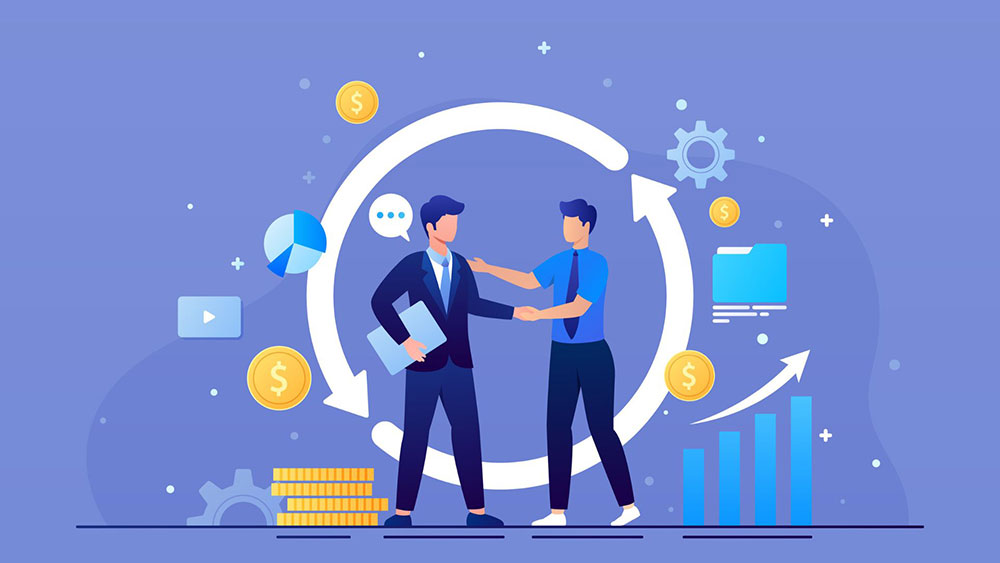Top 7 Stages of a Successful B2B Sales Cycle Explained
In business terms, understanding the B2B sales cycle helps businesses drive more conversions and ensure long-term relations. A properly defined sales funnel helps organizations steer the prospect through various stages from becoming aware to actually buying, thus facilitating sustainable business growth strategies. The seven stages of a successful B2B sales cycle are given below along with actionable insights into each.
Stage 1: Prospecting
Prospecting is the initial step in the B2B sales cycle, where businesses search for companies that fit their ideal customer profile. This stage lays the groundwork for the entire sales funnel. The main Goal is to Identify and qualify potential leads.
Key Steps:
- Use data-driven tools like LinkedIn, CRM platforms, and industry reports to identify potential leads.
- Attend industry events and engage in networking to expand your reach.
- Leverage outbound strategies like cold emails and calls to initiate connections.
Best practices are to focus on quality over quantity by prioritizing leads most likely to convert and developing a clear value proposition customized to the prospect’s industry.
Stage 2: Initial Contact
This stage involves reaching out to identified leads and initiating meaningful conversations to introduce your solution and its relevance to their challenges. The main goal is to build rapport and establish communication.
Key Steps:
- Personalize your outreach using insights into the prospect’s business.
- Utilize emails, phone calls, or social media to establish a connection.
- Schedule a discovery meeting to explore their needs further.
Best Practices for Initial Contact are to use concise, compelling messaging to capture attention and be persistent without being intrusive; timely follow-ups are key.
Stage 3: Needs Assessment
The needs assessment stage is critical for uncovering what the prospect truly requires, enabling you to position your solution effectively within the sales funnel, and the goal is to identify the prospect’s pain points and goals.
Key Steps:
- Conduct in-depth research on the prospect’s industry and challenges.
- Ask open-ended questions during meetings to clarify their needs.
- Align their pain points with your product’s capabilities.
Best exercise to be done is active listening & documenting key insights and avoiding assumptions; let the prospect’s input guide the conversation.
Stage 4: Presentation/Demonstration
In this stage, you present your product or service as the ideal solution to their challenges, focusing on its tangible benefits and ROI.The main goal is to showcase how your solution meets the prospect’s needs.
Key Steps:
- Create your presentation or demo to the specific needs uncovered during the assessment.
- Use real-world examples, case studies, and data to build credibility.
- Highlight the competitive advantages of your offering.
The best way to be done is to keep the presentation interactive to maintain engagement and address objections or concerns proactively.
Stage 5: Proposal
The main goal is to provide a formalized solution and pricing. This stage marks the transition from discussion to a concrete offer. The proposal serves as a detailed blueprint for the collaboration.
Key Steps:
- Draft a proposal outlining deliverables, timelines, and costs.
- Emphasize the value and ROI your solution provides.
- Include a clear call-to-action for moving forward.
Best ways for this stage are to Customize the proposal to reflect the prospect’s unique needs also Ensure clarity in terms and conditions to avoid misunderstandings.
Stage 6: Negotiation and Handling Objections
The main goal is to address concerns and finalize terms. Negotiation is a vital sales stage where you address any reservations and align on a mutually beneficial agreement.
Key Steps:
- Listen attentively to objections and respond with data-driven insights.
- Offer flexible options while maintaining the integrity of your value proposition.
- Reiterate the benefits and address cost concerns with long-term ROI in mind.
Best ways for negotiation is to Stay professional and empathetic during discussions and Be prepared with alternative solutions to overcome roadblocks.
Stage 7: Closing the Deal
The main goal is to secure the agreement and initiate a partnership. Closing the deal is the final stage in the B2B sales cycle, where the prospect transitions into a customer, setting the stage for long-term collaboration.
Key Steps:
- Finalize all terms and obtain the necessary approvals.
- Guide the client through the signing process.
- Celebrate the partnership and outline the next steps for onboarding.
Best Practices are to Express appreciation and enthusiasm for the collaboration and Ensure a seamless handoff to the onboarding or account management team.
Enhancing Your B2B Sales Cycle
- Leverage Technology: Utilize CRM systems and sales automation tools to streamline processes and monitor the sales funnel.
- Train Your Sales Team: To enable your people to understand every phase of complicated sales stages, get them regular trainings.
- Analyze metrics. Monitor your sales cycle for the bottlenecks and then polish your strategies for improvement.
Conclusion
Mastering the B2B sales cycle comes from understanding each stage and setting a strategic trajectory of guiding prospects through the funnel of sales. By implementing these stages- building trust, addressing needs, and delivering value-building elements-biases conversions and creates sustainable business growth strategies. Whether you are a marketer, business owner, or sales professional, these insights will empower you in navigating the complexities of B2B sales with confidence.


